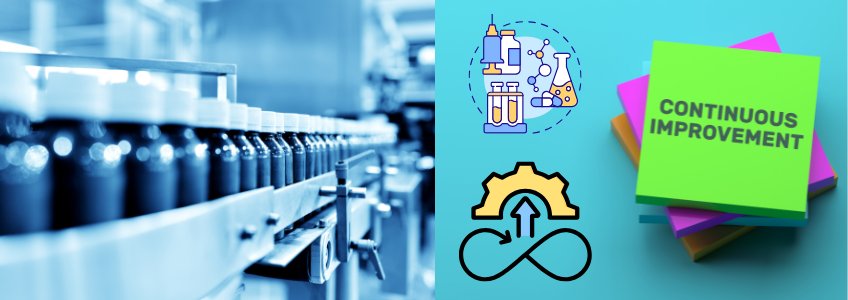
Introduction
In the highly regulated and patient-centric pharmaceutical industry, maintaining the highest standards of quality is paramount. The DMAIC methodology, coupled with the 10 Quality Commandments, provides a robust framework for driving continuous improvement and ensuring product safety and efficacy.
What is DMAIC?

DMAIC is an acronym for Define, Measure, Analyze, Improve, and Control. It is a data-driven improvement cycle used to optimize and stabilize business processes. DMAIC is an essential tool for pharmaceutical companies to identify and address quality issues, enhance operational efficiency, and comply with stringent regulatory requirements.
The 10 Quality Commandments
The 10 Quality Commandments serve as guiding principles that complement the DMAIC process. They also foster a culture of quality and continuous improvement within the pharmaceutical sector:

1. Know Your Customer: Understand the specific needs and expectations of patients, healthcare providers, and regulatory authorities.
2. Be Proactive, Not Reactive: Implement robust quality management systems (QMS) to proactively identify and mitigate potential risks.
3. Involve Everyone: Foster a culture of quality and continuous improvement by engaging all employees, from manufacturing to quality assurance.
4. Use Data to Drive Decisions: Utilize statistical process control (SPC) and other data-driven tools to make informed decisions and monitor process performance.
5. Prevent Problems Rather Than Correct Them: Emphasize preventive measures, such as robust validation and qualification processes, to minimize deviations and recalls.

6. Listen to Your Employees: Encourage a culture of open communication and feedback to identify potential issues and improvement opportunities.
7. Give Recognition and Rewards: Recognize and reward employees for their contributions to quality and continuous improvement.
8. Engage in Continuous Training: Provide ongoing training and development to ensure that employees have the necessary skills and knowledge to maintain high quality standards.
9. Measure Everything: Establish key performance indicators (KPIs) to monitor critical quality attributes and process parameters.
10. Document Processes and Performance: Maintain comprehensive documentation of processes, procedures, and quality records to ensure compliance and traceability.
Aligning DMAIC with the Quality Commandments in the Pharmaceutical Sector

The DMAIC framework aligns seamlessly with the 10 Quality Commandments, providing a structured approach to quality improvement:
1. Define Phase:
- Quality Commandments: Know Your Customer, Involve Everyone
- Action: Clearly define the problem or opportunity for improvement, considering patient safety, product efficacy, and regulatory compliance. Involve cross-functional teams, including quality assurance, manufacturing, and regulatory affairs, to ensure a comprehensive understanding of the issue.
2. Measure Phase:
- Quality Commandments: Use Data to Drive Decisions, Measure Everything
- Action: Establish baseline metrics and identify critical quality attributes (CQAs) and critical process parameters (CPPs). Utilize statistical process control (SPC) charts to monitor process variability and identify trends.
3. Analyze Phase:
- Quality Commandments: Prevent Problems Rather Than Correct Them, Listen to Your Employees
- Action: Conduct root cause analysis (RCA) to identify the underlying causes of quality issues. Utilize data mining and statistical tools to analyze large datasets and identify patterns. Encourage feedback from employees to identify potential issues and improvement opportunities.
4. Improve Phase:
- Quality Commandments: Be Proactive, Engage in Continuous Training
- Action: Develop and implement effective corrective and preventive actions (CAPAs) to address root causes. Conduct pilot studies to validate the effectiveness of proposed solutions. Provide training to employees to ensure they have the necessary skills to maintain improvements.
5. Control Phase:
- Quality Commandments: Document Processes and Performance, Give Recognition and Rewards
- Action: Establish robust control plans to maintain process stability and prevent future deviations. Continuously monitor key performance indicators (KPIs) and conduct periodic audits to ensure compliance. Recognize and reward employees for their contributions to maintaining high standards of quality.
Conclusion
Pharmaceutical companies can achieve sustainable quality improvement, enhance patient safety, and maintain regulatory compliance by effectively integrating DMAIC and the 10 Quality Commandments. This structured approach ensures that quality is not just maintained but continuously improved, fostering a culture of excellence and reliability in the pharmaceutical sector.
If you are interested to achieve similar success stories, write to us!
